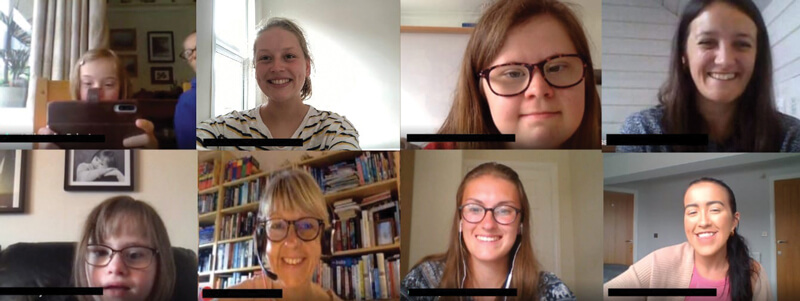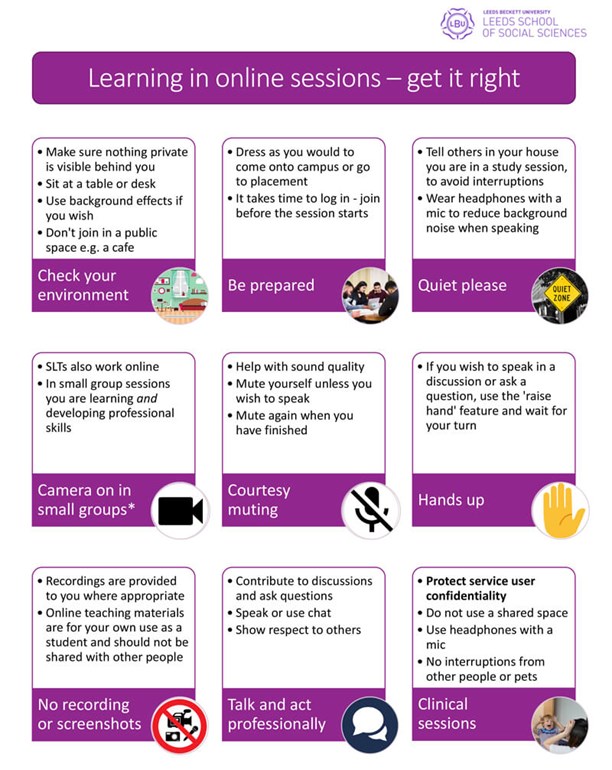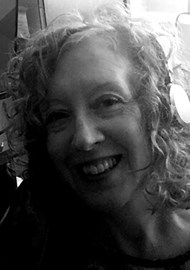In a situation where we cannot meet our students (whether they be medical professionals or non-medical), how do we maintain their education? Peter Samuel has been speaking to some colleagues on how they have risen to the challenge.
The COVID-19 pandemic has required teaching establishments to change their educational procedures and adopt virtual methods to address their students. We present some thoughts on our initial experience of remote teaching of Speech and Language students at Leeds Beckett University during May and June 2020.
Presenting a lecture remotely is difficult. If there is a large audience, not everyone attending can be visualised. Are they bored, enthused, smiling, sad or bewildered? Giving tutorials to a small group of students, say up to 10, is more satisfactory in that all participants are visible, and interaction is easier. It is important that the audience is ‘muted’ during the presentation as voices become garbled due to time delays, and chaos ensues. Participants should wave to attract attention to speak or use the ‘chat’ facility. Presentations can be recorded and referred to at a time convenient to the student.

Online Communication Café - SLT students and young people with Down syndrome gaining skills together.
Technology is not fool-proof and can let you down, as we see nightly, even with professional broadcasters. The Wi-Fi connection breaks down or your computer runs out of power and there is a variable time delay with responses. Where you present from is important: acres of books in the background may look erudite but can be distracting. Echoes can be annoying, and lighting should be in front of the speaker.
“Students gained communication and interpersonal competencies in addition to teletherapy expertise, equipping them for the current workplace”
Remote teaching reduces direct face-to-face contact and spontaneous interaction between the teachers and students, as well as with their peer groups. Not all subjects and study lend themselves to remote learning, e.g. clinical examination and practical procedures. On the plus side, in a lockdown, without remote connectivity, little or no teaching is possible. This has also helped clubs, societies and groups to continue to keep in touch, viz the Communication Café described by Jo Sandiford.

‘Online Etiquette’ graphic from Leeds Beckett University, School of Social Sciences.
Technology is continuously changing, and improvements are being made, but it is difficult to conclude that this method of imparting knowledge will completely take over. Perhaps in the future, a combination of methods according to circumstances will be the norm.
Peter Samuel
“Preliminary data suggests students would like simulated learning opportunities to continue as a supplement to traditional clinical placements post-pandemic because they offer more focused and targeted learning”
Block placements for all our Speech and Language Therapy final-year students were cancelled in March 2020.
We identified that our students needed experience in case discussions, clinical scenarios, and simulation-based learning, to enable them to develop their clinical skills and meet the Standards of Proficiency required to qualify as SLTs. We also wanted to skill them up with remote or telehealth practice, so we looked for online client-facing opportunities. We contacted a local support group for parents of children with Down syndrome. As schools closed and other social opportunities reduced, these young people were quite isolated and were finding it difficult to join other online groups. So, we set up a Communication Café; the SLT students ran weekly online communication groups for 12 young people with Down syndrome. It was a win-win: the teenagers loved coming online to chat, do quizzes and practise their conversational skills, and the students gained communication and interpersonal competencies in addition to teletherapy expertise, equipping them for the current workplace.
Jo Sandiford
I supervised final-year students with simulated learning, using ENT/head and neck cancer case scenarios, with Peter Samuel introducing MDT concepts.
These ENT/SLT joint sessions were then extended to clinical workshops for first-year students at a more introductory level. Final-year students ran online voice care sessions for a group and individual professional voice users who were not dysphonic but who wanted to learn how to keep their voice healthy. These sessions included vocal warm-up exercises, and students developed detailed voice care plans after reviewing the evidence base. Specialist SLTs also role-played clients with dysphagia and dysphonia to allow students to gain practice in case history-taking. A research study has begun to investigate the students’ perspective. Preliminary data suggests students would like simulated learning opportunities to continue as a supplement to traditional clinical placements post pandemic because they offer more focused and targeted learning that can be difficult to schedule in busy clinical settings.
Anne Hurren
Following the cancellation of our placements, I organised direct client work for students who wanted to develop skills in working with adults with neurological conditions and associated communication difficulties.
I supervised the students to carry out communication work with volunteers, which was additional to any SLT input they were already receiving. Activity examples included developing strategies to improve speech intelligibility, working on word-finding difficulties in conversations, and creating communication books to support people in being able to express their needs. The direct client contact was coupled with working on theoretical case studies, clinical problem solving and decision-making scenarios. Overall, this supported the students to develop their direct clinical skills and to increase their confidence managing a clinical caseload and demonstrating their readiness for practice.
Naomi de Graff
Summary
We have presented some experiences of teaching groups of university students at varying levels during a pandemic lockdown, thus enabling continuation of studies. New teaching and learning techniques are required and it may be that traditional methods and new remote techniques will prove to be the ideal.
Lessons learned and tips for others
-
Ensure students make their background environment professional and use throws to cover their bed if a bedroom is their only workspace.
-
Use a headset with microphone for clarity of sound.
-
A plug and play USB webcam with microphone is moderately expensive but ensures better images and can be moved to fit in with different workspaces. It will allow you to stand up and move around, as sitting all day directly in front of a laptop webcam can be uncomfortable.
-
Make sure students have access to a confidential workspace and are not sharing rooms or logging on in a public space.
-
Health informatic templates can be downloaded and designed for use in online therapy sessions using screen sharing, and are easier to use online than PDFs etc.







